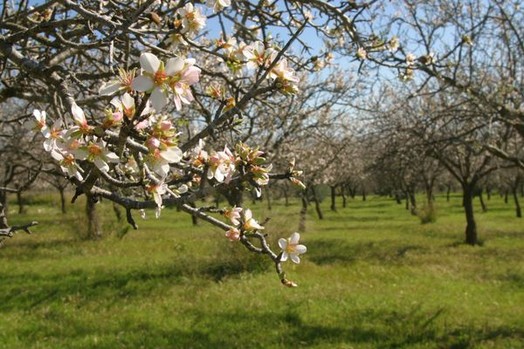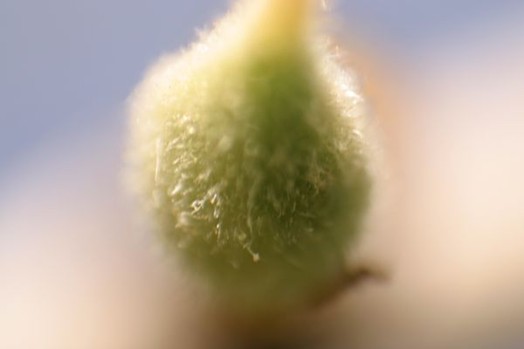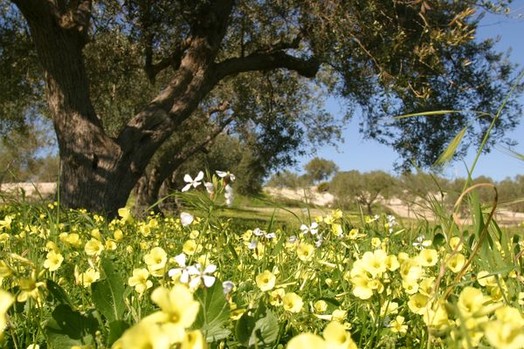LEAVE YOUR COMMENT
Joe Ray
Food & Travel / Words & Photos
Wednesday, February 21, 2007
How The Rototiller Makes Life Taste Better
The other day, Francesco and I grabbed some sandwiches in town and headed out to the farm where his family grows the majority of their almond trees. It was one of those window-down, drive through the countryside days that made me shout the obvious, “Damn! It’s nice out!”
You’d never know it’s February here. The almond flowers are in full bloom, with some of the petals already on the ground. Wildflowers are everywhere, particularly between the rows of trees.
“It’s wilder here in Syracuse,” he explained in the car on the way here.
“That’s the difference between the Syracuse and Ragusa provinces,” explained Francesco. Ispica, where he lives, is a ten-minute drive away in Ragusa.
“See? Here there are no stone walls,” he said as we crossed the border. Sure enough, the beautiful stone walls that line almost every road in Ragusa disappeared.
Not only that, all the hedges of wild fennel, flowers and brush which are part of a bigger group of plants known as macchia mediterranea were overgrown, spilling out into the road.
You get the feeling that the Ragusans think the Syracusans are a bunch of slobs.
It’s just a different kind of beauty.
Francesco needed to head out there to check on the planting of some year to two-year old olive tree saplings and I stop by one of the holes they’ve dug for the trees. The very dense clay-like soil ranges in color from near-white to brown.
It’s so dense, I start wondering about tilling the soil, but then it dawns on me: tilling can’t do much for trees and vines other than encourage them to send their roots downward.
Au contraire, I learned – rototilling feeds them lunch.
One of the things I’m beginning to appreciate about the Sicilian countryside is that the more you slow down, the more diversity you notice. When I hit the halfway point on my run through the canyon that links Ispica and Modica, I stop, turn off the headphones and listen for five minutes. Between the birds and the bugs, I bet I hear 20 different species.
Under any given almond and olive tree in Francesco’s father’s fields, a similar diversity exists on the ground – along with the grass, there are a good 20 different kinds of plants and wildflowers, from prickly nettles to blue and white flowers, most of which are part of macchia mediterranea. The star of the show, however, is a yellow flower Francesco’s mother calls sinacciuolu. (I’m working on the English/botanical name. Bear with me.)
Here, sinacciuolu encircles the bases of the olive trees, with those in the sun of the tree open, while those in the tree’s shade are closed.
“Take a bite,” suggested Francesco, who chomped off the lower half of one of the stalks.
“You taste it and it’s sweet and bitter and you’re not sure if you like it, when you finish, you want more,” I offered.
“Sounds like a good way to describe Sicily,” he replies.
The aside makes me grin, but it also brings us back to tilling.
The tilling usually happens between spring and summer seasons, though today, they’re tilling lightly around the new trees to help the soil catch the rain.
“Regular” tilling not only loosens up the top foot or so of soil and buries the long grass that could dry out and start fires but it also provides lunch for the neighboring trees.
“You mix the grass and flowers and prepare a sort of meal for the trees,” says Francesco.
I snicker.
“To me,” he continues, “I can taste the macchia mediterranea from the first smell right through to the aftertaste. It’s like someone is taking a bunch of the flowers, and they fly into your senses.”
It’s important to note here that Francesco used to work for a big advertising agency in Milan.
Later, though, I grab a bottle of the oil and put it to the macchia mediterranea test. Alone, I slurp a good teaspoon’s worth from the bottle and make the cat-retching noise that vaporizes a bit of the viscous oil, making it easier to taste.
It’s wonderful oil, but in terms of the wildflowers, I taste nothing. I smirk and set the bottle down ready to go make some dinner. Then I stop smirking. Sure enough, there it is in my mouth: sinacciuolu.
“A meal for the trees” it is, then.
This is Joe Ray reporting from the Motherland.



